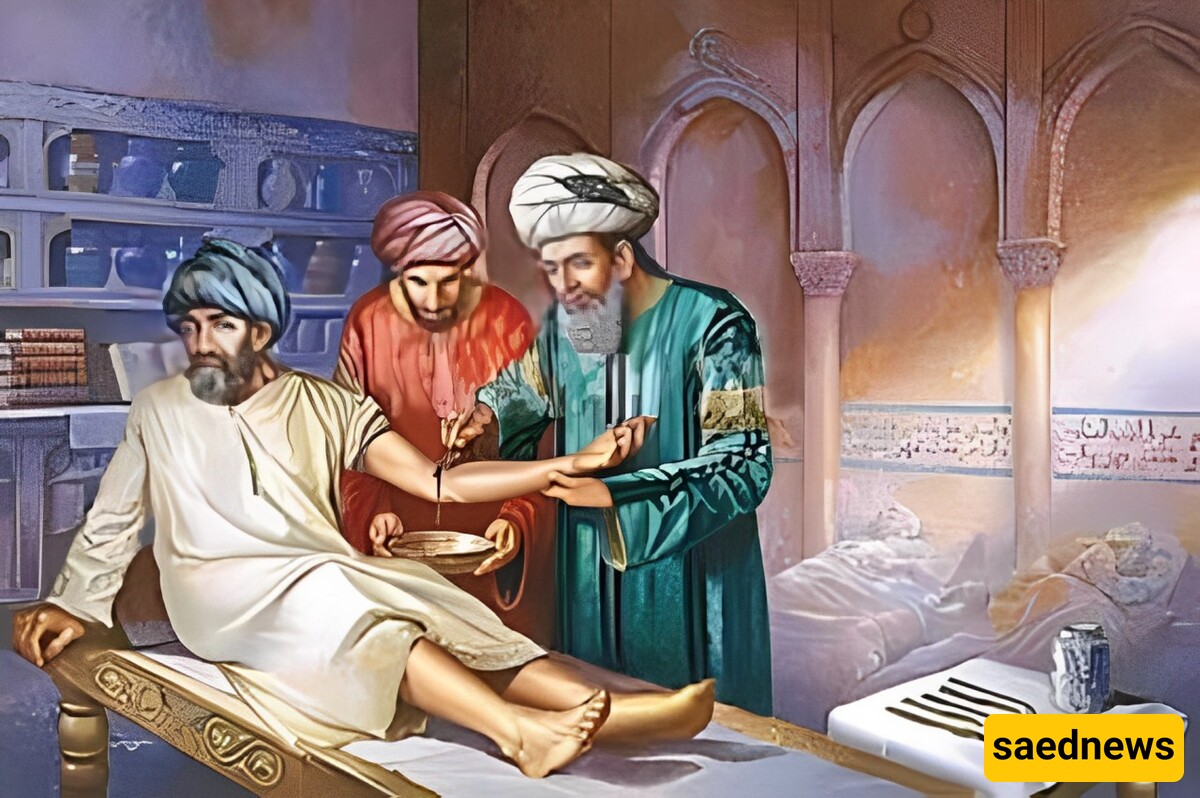SAEDNEWS: Discover the holistic healing practices of the Achaemenid Empire, where ancient Persian medicine blended spirituality and science, influencing Greek and Islamic medical traditions for centuries.

According to SAEDNEWS, The Achaemenid Empire, founded by Cyrus the Great in the 6th century BCE, was not only a vast political and military power but also a center of intellectual and cultural achievements. One of the empire's notable contributions was in the field of medicine, where ancient Persian healers developed sophisticated practices rooted in spirituality, herbal knowledge, and scientific inquiry. These practices influenced both Greek and later Islamic medicine, forming a bridge between ancient and medieval healing traditions.
Persian medicine in the Achaemenid era was closely tied to the teachings of Zoroastrianism, the dominant religion of the empire. According to Zoroastrian beliefs, good health was a state of harmony between the body, spirit, and environment. Disease was viewed as a disruption of this balance, often attributed to evil forces. Healing practices, therefore, aimed to restore balance through a combination of physical remedies and spiritual rituals.

Persian healers used an extensive range of herbs and plants to treat ailments. Many of these plants, such as mint, saffron, and fenugreek, are still used in traditional medicine today. The Persians’ detailed knowledge of the healing properties of herbs laid the groundwork for pharmacology in later Greek and Islamic traditions.

Zoroastrian priests, known as magi, played a central role in healing practices, performing rituals and reciting prayers to drive away illness-causing demons. Spiritual healing was often accompanied by the use of incense and certain plants believed to have protective powers.
Though many Achaemenid medical texts have been lost to history, some references remain in later sources that hint at the existence of organized medical training centers. These centers may have been established in temples, where Zoroastrian priests taught not only religious texts but also medical practices to apprentices.
Ancient Iranian texts such as the Vendidad (part of the Avesta, the Zoroastrian holy book) contain chapters on hygiene, disease prevention, and treatment, reflecting an early understanding of public health. The Avesta’s guidelines on cleanliness and sanitation—such as proper disposal of waste and care for the body—highlight a proto-scientific approach to preventing disease.
A special class of healers, called asbistan, is believed to have existed within the Achaemenid society. These healers combined physical treatments with spiritual knowledge, symbolizing the integration of scientific and religious approaches to medicine.
The influence of Achaemenid medicine extended well beyond the empire’s fall, as subsequent Persian dynasties continued and expanded on these practices. By the time of the Islamic Golden Age, Persian scholars played a leading role in preserving and advancing medical knowledge.
Persian physician Avicenna (Ibn Sina), whose Canon of Medicine became one of the most authoritative medical texts in the medieval world, was deeply influenced by earlier Persian practices. His writings include references to herbs and treatments rooted in Achaemenid tradition.

The development of hospitals, known as bimaristans, in Islamic Persia reflects the continuity of the Achaemenid commitment to public health and organized medical training. These institutions provided care for the sick, while also serving as centers for medical study, echoing the temple schools of the Achaemenid era.
Some specific practices from the Achaemenid era exemplify the sophistication of ancient Persian medicine:

Known for their antibacterial properties, these plants were staples in the Achaemenid medical toolkit and were used to treat infections and digestive issues.

Techniques such as cupping (applying heated cups to the skin to draw out impurities) and bloodletting were common and believed to balance bodily fluids, a concept that would later influence the humoral theories of Greek and Islamic medicine.

Water played a symbolic and practical role in Achaemenid medicine. Bathing and water-based therapies were recommended for their purifying qualities, reflecting an understanding of cleanliness and its importance to health.
The integration of religious beliefs with scientific inquiry in Achaemenid medicine contributed to a holistic approach that emphasized physical, mental, and spiritual health. This approach not only influenced ancient civilizations but also shaped the development of a unified medical tradition across the Persian Empire.
In later centuries, the Achaemenid legacy continued in the Sassanid and Islamic eras, with Persian scholars playing a pivotal role in advancing medical knowledge. From herbal remedies to public health concepts, the innovations of Achaemenid medicine resonate in the practices of modern holistic and alternative medicine, highlighting Iran’s foundational role in the history of healing.
The Achaemenid approach to medicine blended spiritual wisdom with empirical knowledge, creating a healing tradition that valued both the mind and the body. Its influence on Greek and Islamic medicine helped shape a global medical heritage that still resonates today. Through this legacy, ancient Persia lives on as a pioneer of holistic healing, an empire that placed health and harmony at the heart of its vision for humanity.

